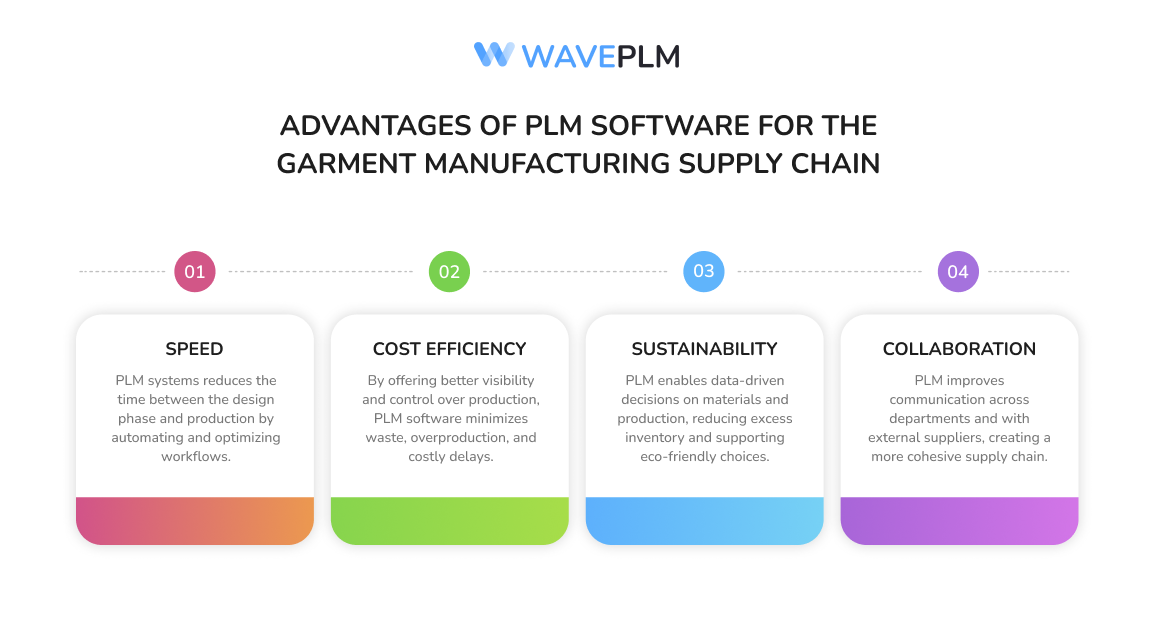
In the fast-paced world of fashion, keeping up with ever-changing trends and consumer demands is a challenge. Brands need to balance supply and demand in apparel to remain competitive and profitable. This balance isn’t just about having enough stock on hand; it’s about producing the right amount of garments at the right time, in the right quantities.
To do this efficiently, brands rely on an intricate fashion supply chain that integrates everything from garment design to production, logistics, and distribution. As consumer behaviour changes, technology plays a crucial role in helping companies meet demand while minimizing waste. In this article, we’ll explore how supply and demand in apparel are balanced, and the critical role modern innovations like Product Lifecycle Management (PLM) software play in the process.
The Complexity of Clothing Supply and Demand
Supply and demand in the apparel industry are unpredictable, to say the least. Fashion seasons change quickly, trends emerge and vanish, and global events can upend the entire garment supply chain. The traditional supply chain process, where clothing manufacturers would make bulk orders based on rough seasonal predictions, no longer works in today’s dynamic market.
Consumers demand variety and expect brands to keep up with trends almost in real-time. Brands, therefore, need to adopt global supply chain solutions that reduce the gap between production and consumer expectations.
Fashion businesses that fail to adapt risk overproducing, leading to excessive inventory and wasted resources, or underproducing, causing stock shortages and lost sales. In both scenarios, brands suffer financial losses, and their reputation takes a hit. To tackle this issue, clothing companies have adopted agile supply chains supported by data-driven decisions, ensuring a more efficient apparel supply chain management.
The Role of Technology in the Fashion Supply Chain
In today’s garment industry supply chain, technology has become the backbone of efficiency. Tools like Product Lifecycle Management software help brands streamline every aspect of their operations, from initial garment design to retail. With these innovations, brands can respond quickly to market demands, minimize production time, and optimize inventory.
Fashion PLM and Supply Chain Efficiency
One of the most significant advancements in modern fashion supply chains is the use of PLM technology. PLM solutions give companies a central hub to manage every stage of product development. By integrating processes, teams can collaborate in real-time, reducing bottlenecks and improving time-to-market. This is especially important in an industry where trends can emerge overnight, and brands need to be quick in translating ideas into tangible products.
PLM software provides several advantages for the garment manufacturing supply chain:
- Speed: PLM systems reduces the time between the design phase and production by automating and optimizing workflows. Teams can make real-time adjustments to designs, sourcing, and production plans, ensuring faster delivery times.
- Cost-Efficiency: By offering better visibility and control over production, PLM software minimizes waste, overproduction, and costly delays. One of such practices – automated quality control.
- Sustainability: PLM supports more sustainable practices by helping brands make data-driven decisions about materials and production volumes, reducing excess inventory and promoting eco-friendly choices.
- Collaboration: PLM enables better communication across departments and even with external suppliers, including raw material suppliers, creating a more cohesive garment supply chain.

Demand Forecasting
Another key area where technology impacts clothing supply and demand is demand forecasting. Advanced data analytics, often integrated with PLM systems, help companies predict what will sell and when. By analyzing customer preferences, purchasing patterns, and even global economic conditions, brands can adjust their production schedules to meet actual demand, not just speculative numbers.
For instance, if a particular style of clothing starts gaining traction on social media, data analytics tools can help forecast its potential sales, prompting brands to increase production accordingly. This reduces the risk of stockouts or overstocking items that fail to sell.
Inventory Management Systems
In addition to PLM software and demand forecasting, inventory management systems play a pivotal role in balancing supply and demand in apparel. These systems give brands real-time insights into stock levels across multiple locations, from warehouses to retail stores.
With this visibility, companies can move finished products more efficiently, prevent stockouts, and avoid costly markdowns on unsold items. These systems also help brands implement just-in-time (JIT) inventory strategies, further optimizing complex supply chains.
Innovations Shaping the Fashion Supply Chain
Technological advances don’t stop with PLM systems and demand forecasting. Several other innovations are revolutionizing the garment industry supply chain and helping brands close the gap between supply and demand.
Fast Fashion and Agile Manufacturing
Fast fashion brands have set a new standard in how quickly companies can respond to trends. By adopting agile manufacturing practices, fast fashion companies can take an item from design to store shelves in as little as two weeks. This rapid turnaround is achieved by using small, flexible production runs and constantly adjusting based on real-time consumer feedback.
While fast fashion has its critics due to environmental concerns, the operational strategies behind it offer valuable lessons for the wider garment manufacturing supply chain. Brands that want to remain competitive must be prepared to shift toward agile practices, reducing lead times and increasing flexibility in their supply chains.
Sustainable Fashion Supply Chains
Sustainability is another major force shaping the future of fashion supply chains. Brands are under increasing pressure to reduce their environmental impact, and many are turning to sustainable practices to do so. For example, eco-friendly materials, ethical labor practices, and zero-waste manufacturing techniques are becoming more common in the industry.
Technology, once again, plays a key role here. Fashion PLM helps brands track and manage their environmental impact by providing transparency at every step of the supply chain. Meanwhile, blockchain technology is becoming a strong tool for promoting ethical practices in the garment manufacturing process. It lets consumers trace where their clothes come from.
On-Demand Production
Another emerging trend in the fashion supply chain is on-demand production, which directly addresses the clothing supply and demand imbalance. Instead of producing items in bulk and hoping they sell, some brands now wait until they receive customer orders to begin production. This model drastically reduces waste and allows brands to offer customized options to consumers.
On-demand production is still in its early stages, but it holds great promise for reducing overproduction and promoting sustainable practices. As more brands use this model, we can expect a big change in supply chains. They will move from bulk production to more personalized, customer-driven manufacturing.
The Future of the Fashion Industry Supply Chain
As consumer expectations continue to evolve, so too must the fashion supply chain. In the future, we can expect even greater integration of advanced technologies like artificial intelligence (AI), machine learning, and the Internet of Things (IoT) to further optimize every stage of the supply chain.
AI will likely play a key role in demand forecasting, helping brands predict shifts in consumer preferences with even greater accuracy. Machine learning algorithms can look at large amounts of data. This helps companies make better and quicker decisions about production and inventory.
IoT devices are found in many things, like sewing machines and shipping containers. They will give real-time data on each step of production. This will give brands great insight into their supply chains.
Conclusion
Balancing supply and demand in the clothing industry is a tricky job. It needs careful planning and smart use of technology. Brands that use tools like apparel PLM, demand forecasting, and inventory management systems can better meet consumer needs. These tools help reduce waste and keep brands competitive in a fast-changing market.
As the garment industry supply chain continues to evolve, companies must remain agile and forward-thinking. By embracing innovation, they can bridge the gap between supply and demand. This helps them make the right amount of clothing.
They can meet customer needs while reducing their impact on the environment. This delicate balance is key to the future success of brands in the global fashion landscape.
Through a combination of technology, data-driven insights, and sustainable practices, it’s easier to create an effective supply chain management system. Modern fashion supply chain is transforming to meet the challenges of today and the opportunities of tomorrow.
The brands that succeed today will align production with demand. They will deliver what consumers want when they want it. They must avoid overproducing or missing opportunities.





Leave a Reply